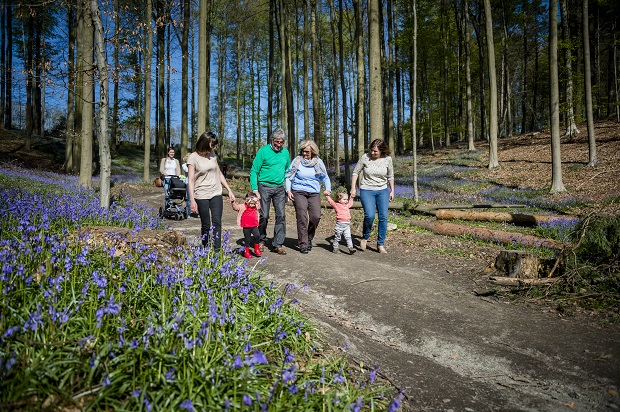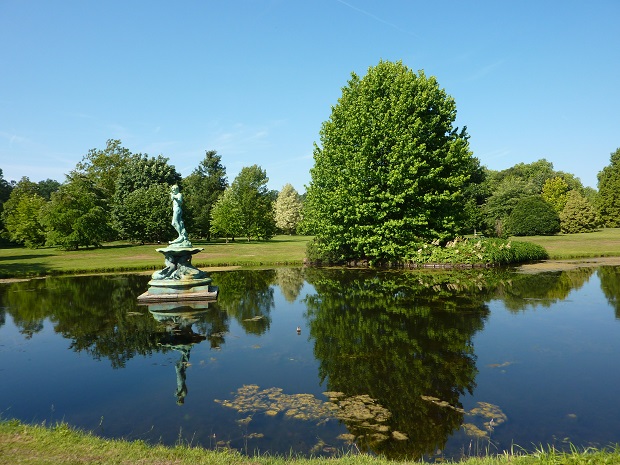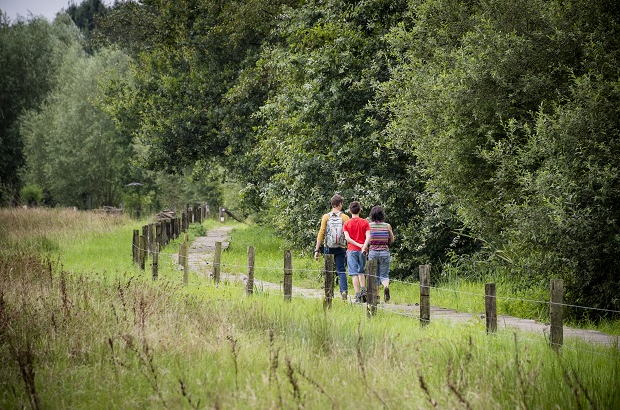- Daily & Weekly newsletters
- Buy & download The Bulletin
- Comment on our articles
Forests and nature reserves: One for every season on your doorstep
Escape city life by exploring one of the many nature spots surrounding Brussels. From ancient woodlands to wetlands and colourful meadows filled with wildflowers, discover a natural oasis on your doorstep.
Forests and nature reserves form the richest and most diverse habitat. And the Flemish Brabant province is bursting with places for a stroll, a hike, a cycling adventure, a picnic or family activity. From the thick foliage of spring to the shrills and sounds of the hunting season and the quiet eeriness of winter, each season promises its own magical surroundings.

The ancient woodland of Halle (pictured, above), known as the blue forest, may be famed for its spring carpet of bluebells, but it’s worthy of a visit all-year-round thanks to a variety of species of trees and fauna. The extensive site is a relic of the charcoal forest that once swathed the area during the last ice age.
Another springtime favourite with scented wood anemones is the woodlands of Bertembos and Eikenbos. Little has changed here since medieval times with mighty oak and beech trees still dominating the landscape. Gorges and valleys create a varied terrain that include the wonderfully descriptive Wolves’ Dell and Foxhole play forest. The woods in Bertem conveniently feature signposted trails. In the centre of the village, the 11th-century Saint Peter’s church is a remarkable example of Roman architecture.

Spread over more than 2,000 hectares, Heverlee Woods and Meerdaal Forest (pictured, above) form the largest deciduous woods in Flanders. Red American oaks reign over a rich abundance of ground plants, including ivy, celandines, various varieties of lilies and wild strawberries. There’s fauna in abundance with a population of deer – the oldest in Flanders – while birdlife is equally rich. Play areas for kids will test their sporting skills and provide hours of nature entertainment. Dogs can roam off their lead in the Speelberg zone.

Stretching southwest from Brussels in the communes of Hoeilaart, Overijse and Tervuren, while also incorporating part of the city, the Sonian Forest (pictured, above) fills almost 5,000 hectares. The famous woodlands boast Unesco heritage status since 2017 due to its magnificent beech trees, which date from the 18th century. The forest itself can be traced back to the Iron age. Thanks to its status as a former royal hunting ground, much of its nature and biodiversity has been preserved. Combined with its accessibility, it’s no surprise that this extensive forest is popular with hikers, nature-lovers and cyclists. Download maps and guides for the main recreational routes.
Part of the Sonian Forest, Hoeilaart’s Groenendael Arboretum dates from 1897 and features some impressive species among its 400 varieties of trees and shrubs. It’s a perfect example of how preserving the natural and ecological environment is a priority for local forest services while also attracting nature lovers, on foot or on bike. For a guided hike through the arboretum, take the Ruusbroec Walk.

From April to November on Wednesdays and Sundays, visitors can explore the exceptional collection of trees and shrubs at Haacht’s Arboretum Wespelaar (pictured, above). One of the world’s best gardens, magnolias are but one of the horticultural jewels in this extensive site made up of parks and woods. The visitor centre has re-opened following a relaxation in confinement measures, but the café and terrace remain closed for the moment. Certain safety conditions need to be respected.
For a saunter back in time to Belgium’s wartime exploits, head to Haacht’s anti-tank ditch. It’s possible to wander along a 3km concrete wall that was once part of the 400km K-W defensive line, built from 1939. The 3.5m high wall is flanked by a ditch with several locks and dams, lying partly in a nature reserve.

The Doode Bemde (pictured, above) in Huldenburg is one of the more accessible nature reserves in the province with 9km of hiking trails that include wooden walkways. The Dijle river valley site, including ponds and canals, is appreciated for the biodiversity of its poplar woods, meadows, shrubs and reed beds.
One of the highlights of the Silsombos marsh near Kortenberg is the early summer forest of wild orchids, when thousands of meter-high buds and blooms fill the woods. Several family-friendly signposted routes loop around the area. Hiking boots are recommended.
The Floordambos nature reserve is another swamp area, accessible from the village of Melsbroek. It’s part of the Demer and Dijle network of walking trails and the forest is swarming with fauna.
Enjoy the view of the historic Brussels-Scheldt canal on one of the Oxdonk walking trails near Zemst. Ramble along country roads through the Bos van Aa, a nature reserve created around a series of wells. The Koningsteen castle and its beautiful garden, is one of many vistas along the way.
The first officially ‘silent area’ in Flanders is located in countryside near Galmaarden, Geraardsbergen and Ninove. Stiltegebied is defined as an area where the natural ambient noise of local fauna form a distinctive soundscape. Explore the area and its resonant backdrop via various signposted routes.
Getting there
If you don’t own a car, you can use public transport or walk or cycle if you live nearby. There are several bus options from Brussels North and Leuven train stations. Contact Tourism Flemish Brabant for more information.
Halle: The Blue Forest is accessible by De Lijn and TEC buses from Halle train station, where you can also rent a blue-bike.
Heverlee and Meerdaal: For Heverlee Woods take Bus No 1 from Leuven train station or rent a blue-bike.
Sonian Forest: Groenendaal train station provides immediate access to the forest.
Haacht, Wespelaar, Huldenburg, Kortenberg and Melsbroek: These villages are accessible by bus and train. The start of the anti-tank trench walk is close to Wespelaar railway station. The nature reserve of Doode Bemde is 1km from Sint-Joris-Weert train station.
Photos: Doode Bemde @ Lander Loeckx; Hallerbos @ Lander Loeckx; Meerdaal @ Lander Loeckx; Zoniënwoud © Lander Loeckx; Arboretum © Arboretum Wespelaar



















